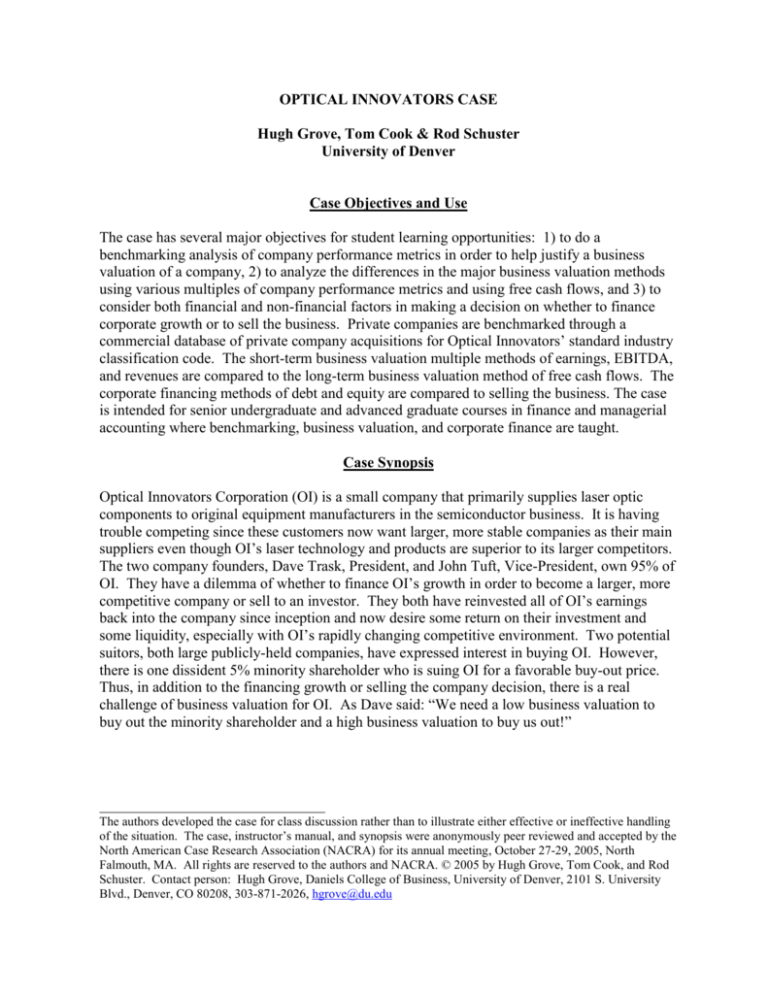
OPTICAL INNOVATORS CASE
Hugh Grove, Tom Cook & Rod Schuster
University of Denver
Case Objectives and Use
The case has several major objectives for student learning opportunities: 1) to do a
benchmarking analysis of company performance metrics in order to help justify a business
valuation of a company, 2) to analyze the differences in the major business valuation methods
using various multiples of company performance metrics and using free cash flows, and 3) to
consider both financial and non-financial factors in making a decision on whether to finance
corporate growth or to sell the business. Private companies are benchmarked through a
commercial database of private company acquisitions for Optical Innovators’ standard industry
classification code. The short-term business valuation multiple methods of earnings, EBITDA,
and revenues are compared to the long-term business valuation method of free cash flows. The
corporate financing methods of debt and equity are compared to selling the business. The case
is intended for senior undergraduate and advanced graduate courses in finance and managerial
accounting where benchmarking, business valuation, and corporate finance are taught.
Case Synopsis
Optical Innovators Corporation (OI) is a small company that primarily supplies laser optic
components to original equipment manufacturers in the semiconductor business. It is having
trouble competing since these customers now want larger, more stable companies as their main
suppliers even though OI’s laser technology and products are superior to its larger competitors.
The two company founders, Dave Trask, President, and John Tuft, Vice-President, own 95% of
OI. They have a dilemma of whether to finance OI’s growth in order to become a larger, more
competitive company or sell to an investor. They both have reinvested all of OI’s earnings
back into the company since inception and now desire some return on their investment and
some liquidity, especially with OI’s rapidly changing competitive environment. Two potential
suitors, both large publicly-held companies, have expressed interest in buying OI. However,
there is one dissident 5% minority shareholder who is suing OI for a favorable buy-out price.
Thus, in addition to the financing growth or selling the company decision, there is a real
challenge of business valuation for OI. As Dave said: “We need a low business valuation to
buy out the minority shareholder and a high business valuation to buy us out!”
The authors developed the case for class discussion rather than to illustrate either effective or ineffective handling
of the situation. The case, instructor’s manual, and synopsis were anonymously peer reviewed and accepted by the
North American Case Research Association (NACRA) for its annual meeting, October 27-29, 2005, North
Falmouth, MA. All rights are reserved to the authors and NACRA. © 2005 by Hugh Grove, Tom Cook, and Rod
Schuster. Contact person: Hugh Grove, Daniels College of Business, University of Denver, 2101 S. University
Blvd., Denver, CO 80208, 303-871-2026, hgrove@du.edu












